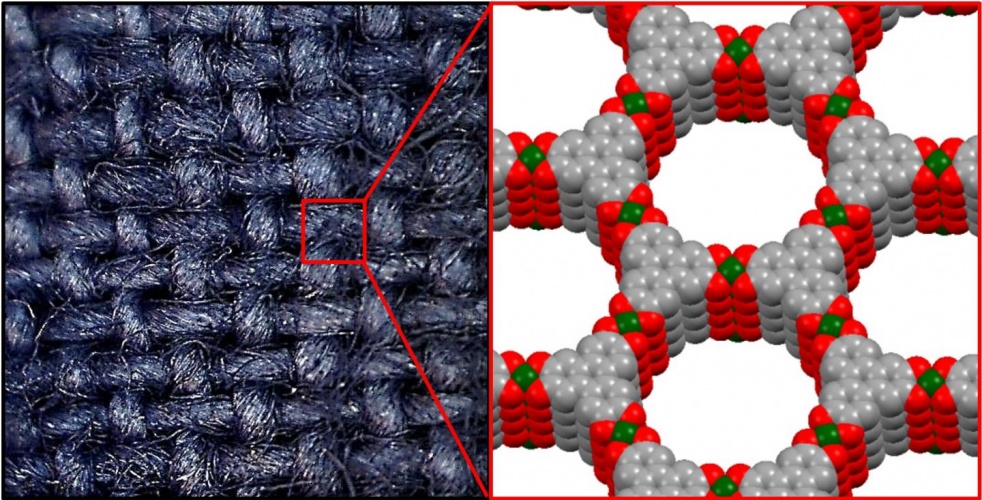
The SOFT e-textile uses metal-organic frameworks (MOFs) to improve detection and protection from toxic chemicals (Credit: KA Mirica)
Known as SOFT (Self-Organised Framework on Textiles), the material is flexible and conductive, yet porous and washable. According to the Dartmouth team, the fabric is capable of real-time gas detection. It’s envisaged that the material would be worn by military and emergency services personnel in conjunction with a haz-mat suit, alerting the user to a breach in the primary barrier.
"By adding this fabric to a protective suit, sensors can alert the user if a chemical is penetrating the hazardous-material gear," said Katherine Mirica, an assistant professor of chemistry at Dartmouth College.
"This is not just passive protection, the textile can actively alarm a user if there is a tear or defect in the fabric, or if functional performance is diminished in any other way."
The smart fabric works by using textile-supported electronic sensors based on materials known as metal-organic frameworks, or MOFs. In their research, published in the Journal of the American Chemical Society, the Dartmouth team showed that the material could identify the exhaust pollutant nitric oxide, as well as the poisonous and corrosive hydrogen sulphide. The researchers claim that the textiles can not only sense these gases, but are also capable of capturing and filtering the dangerous toxins.
"Metal-organic frameworks are the future of designer materials, just like plastics were in the post-WWII era," said Mirica. "By integrating the MOFs into our SOFT devices, we dramatically enhance the performance of smart fabrics that are essential to safety and security."
While the technology requires further development before it can be used in wearable systems, the researchers believe the fabrication method has the potential to be extended into other systems, producing a range of new smart textiles with tunable properties.




JLR teams with Allye Energy on portable battery storage
This illustrates the lengths required to operate electric vehicles in some circumstances. It is just as well few electric Range Rovers will go off...